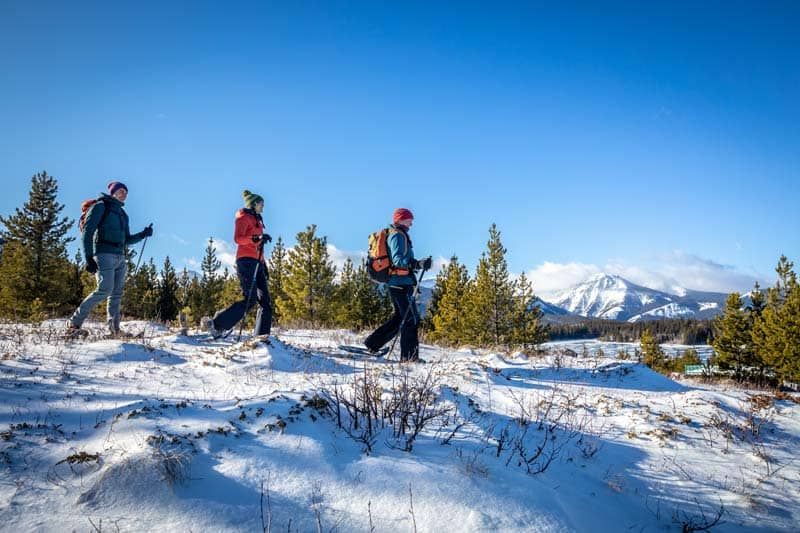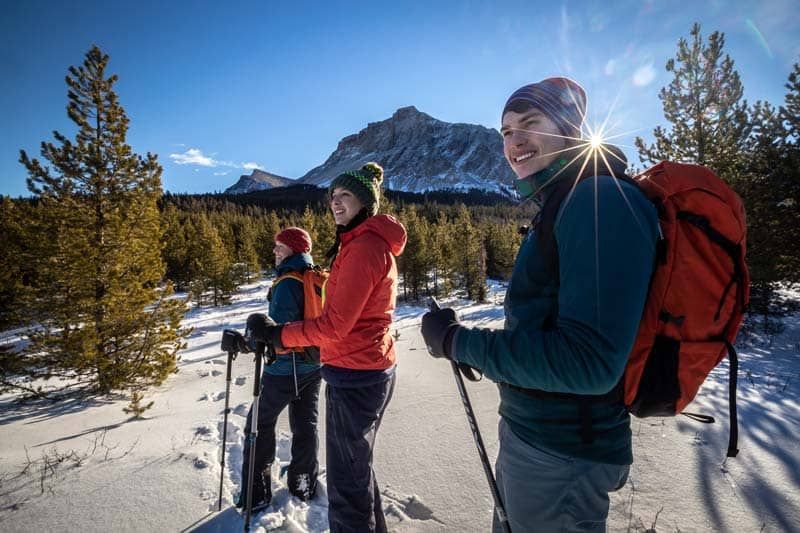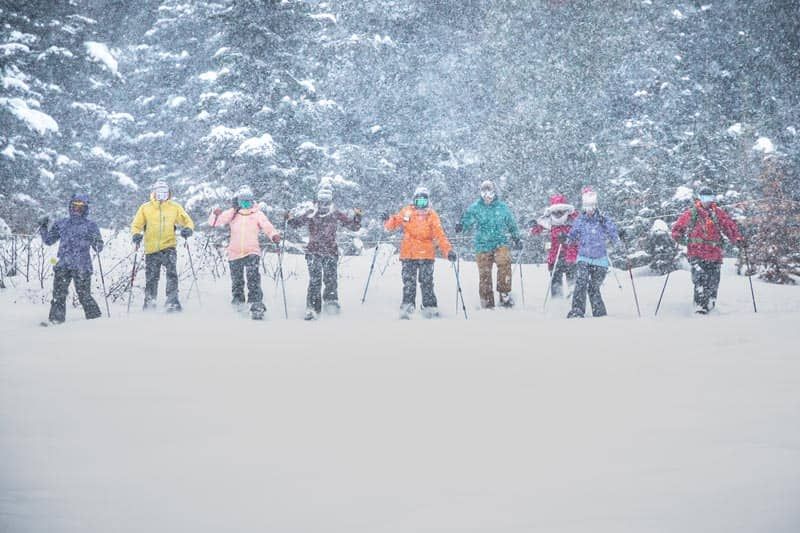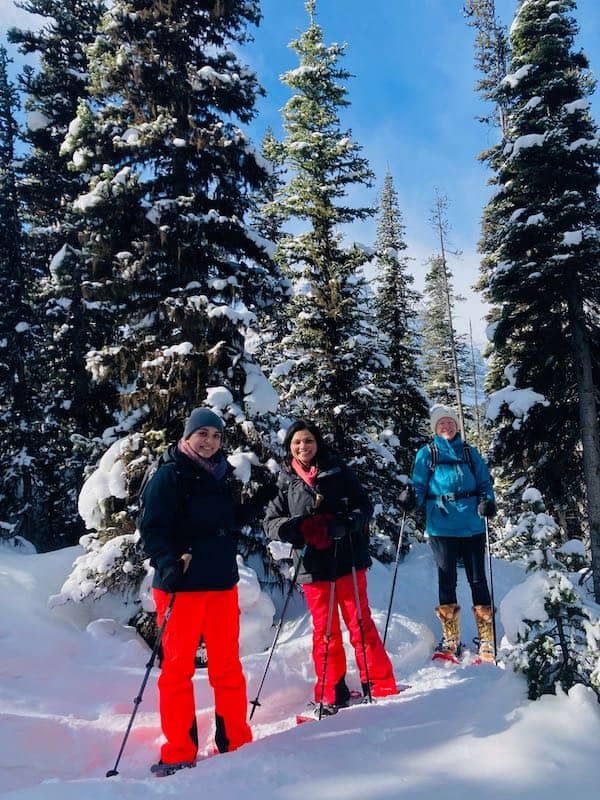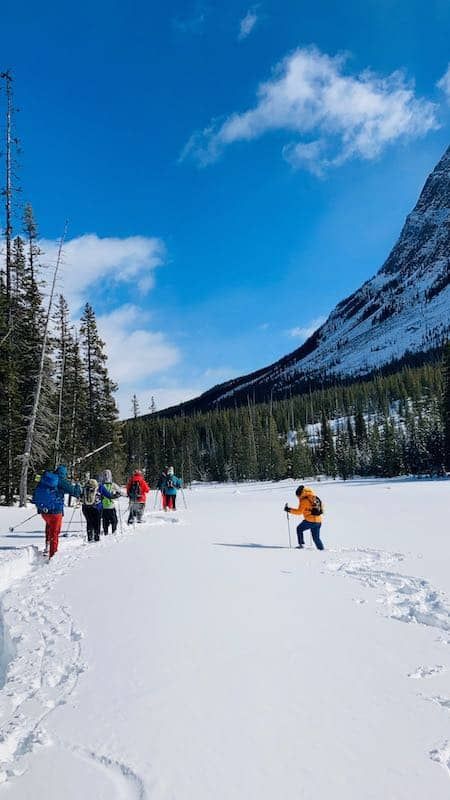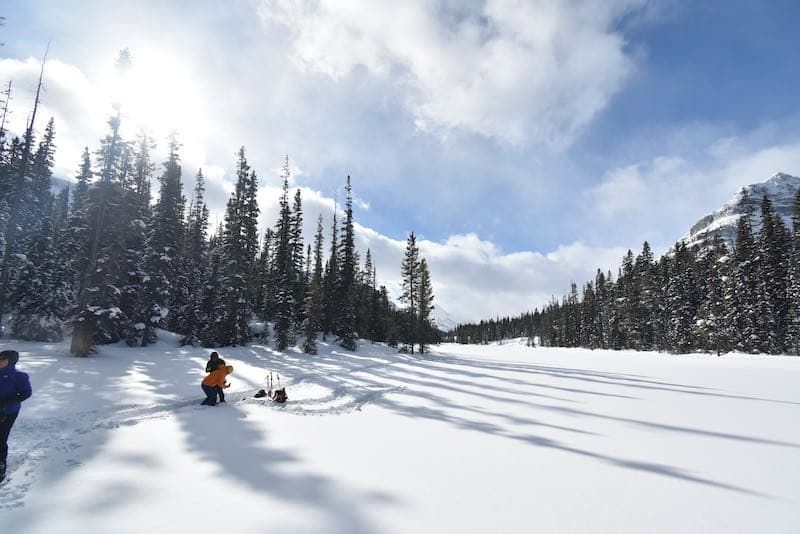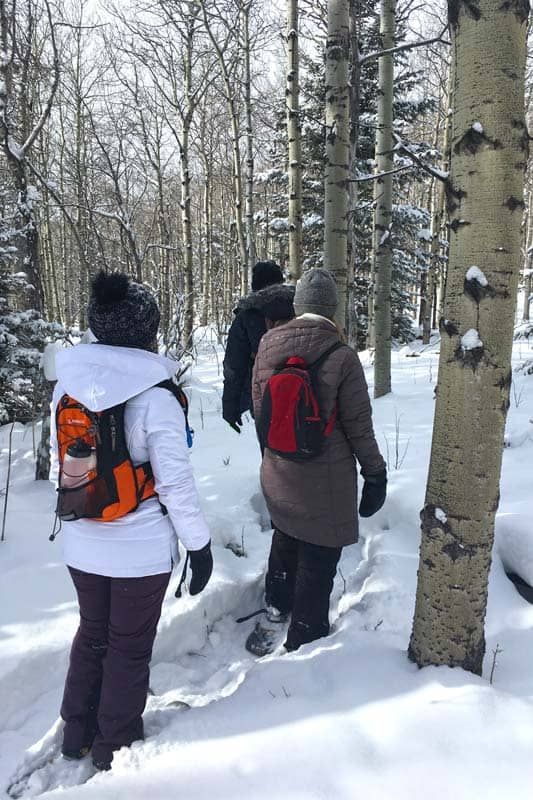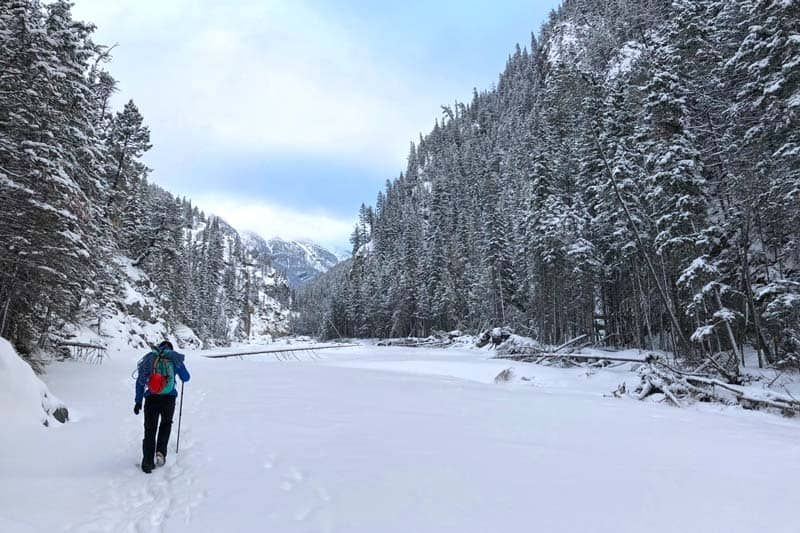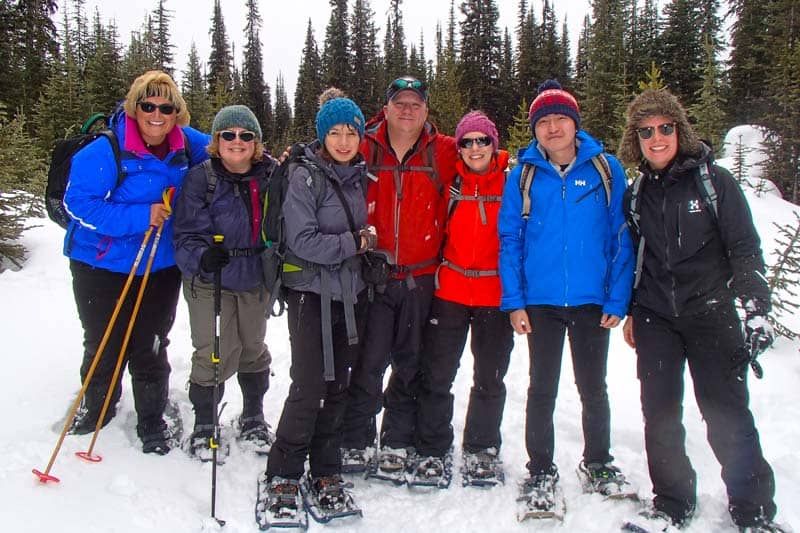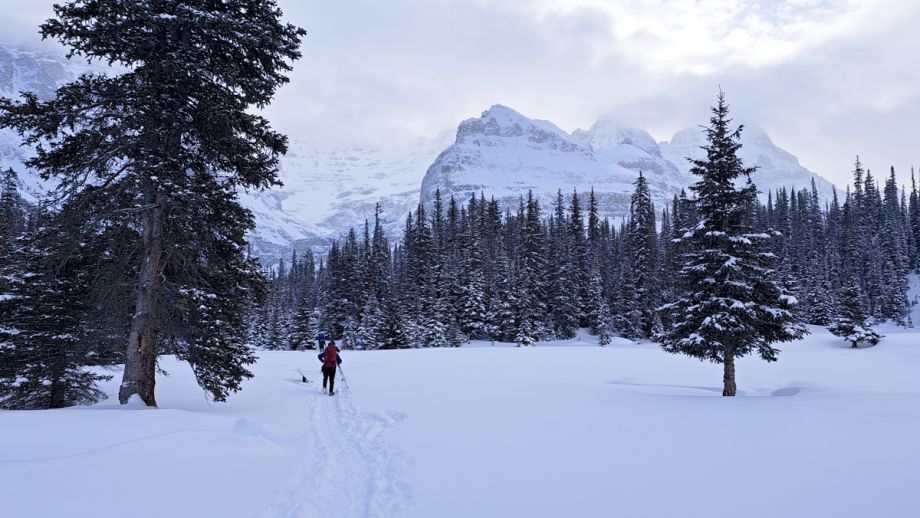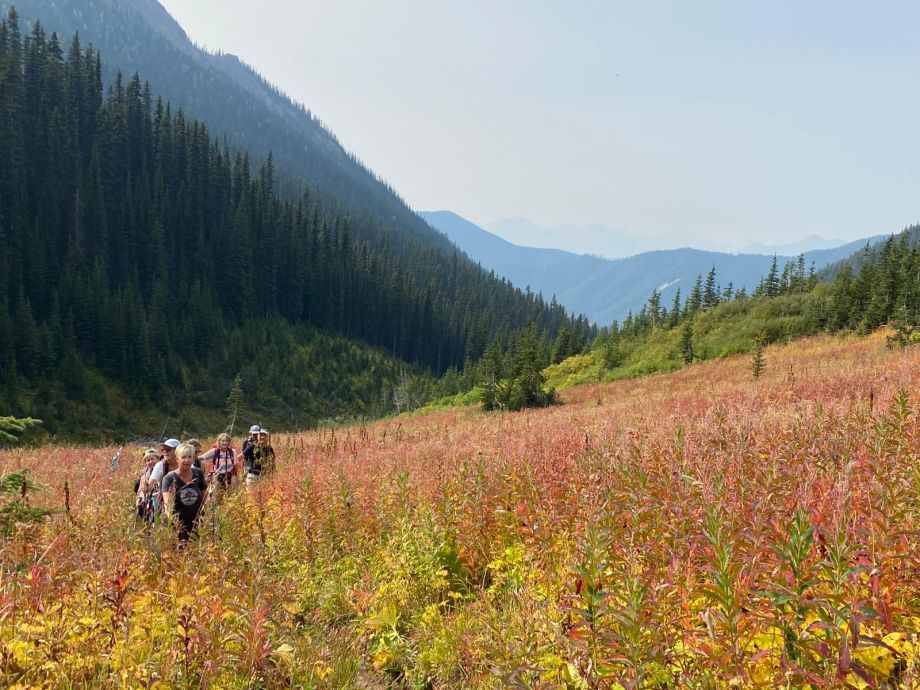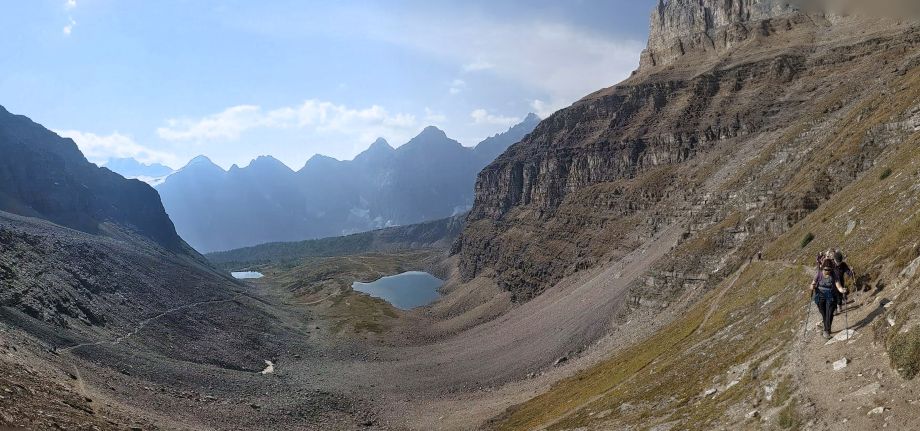Tips for Snowshoeing

Snowshoeing is one of the most underrated winter sports. If you can hike, you can snowshoe. It doesn’t cost much money, it is great exercise and best of all - it allows you to trek through snowy landscapes. But like most activities in the great outdoors, there are things you can do to make it more enjoyable, be better prepared, and safer.
Sadly, people have lost their lives in avalanches while snowshoeing. This isn’t to scare anyone, because there are plenty of places to snowshoe in non-avalanche terrain, but being able to recognize avalanche terrain is critical.
If you aren’t sure if you are going to snowshoe in avalanche terrain - then find out, “know before you go!” Ways to do this? Take an AST course and or hire a guide. Here at Get Outside we offer programs for entry level winter programs like Women's Intro to Winter Camping and Snowshoeing for Fitness. We think knowledge is the best piece of gear you can get!
"Knowledge is the best piece of gear you can get!"
Bring the Right Gear
Colder temperatures bring much higher risk to those who are unprepared. When heading out make sure to pack a “puffy” jacket. Having a warm jacket to put on when you stop is crucial. You will cool off quickly when breaking for a snack or lunch. In the event of an emergency, those extra warm layers could be a lifesaver!
Don’t wear cotton. There is an old saying “cotton kills…” This is because it retains water and moisture. This means any moisture, like your own sweat. Wool and synthetics base layers are the way to go. And yes, they make wool undies and bras, and yes, we love them! To find out more about how to dress in layers checkout our other blog post and video
Pro tip: If you want to keep your phone’s battery warm, you can use the same chemical hot pack that you use for your toes and stick it to the back of your phone.
Hydrate!
When it is cold outside many people don’t feel as thirsty as in the summer months. You'll still want your body to work optimally, so you need to keep hydrated. If water isn’t appealing in the cold temperatures, try flavoured tea or carrying soup in a thermos for lunch. Miso soup or cup a soup are our go to choices!
Pro tip: Keep your Nalgene lid from freezing by carrying it upside down. Ice forms from the top to the bottom. If the bottle is inverted, your lid will never freeze (unless it’s completely frozen). If it’s that cold, it might be time to go home!
Know Where You Are Going
If you’re out exploring trails, especially those that are unmarked, knowing how to use a map and compass can be the difference between life and death. Some depend on their phone, but cold temperatures kill batteries, leaving you lost! We can't stress enough, don’t rely on your smartphone!! Check out some of our videos on how to find north without a compass.
Get Outside offers navigational courses that can help you find your way in any season. In today’s digital world, knowing how to use these navigational tools is not only smart but, in our opinion, damn right amazing!
Watch Your Feet!
When it comes to trails covered in snow, knowing where to place your feet is important. This might seem obvious, but one wrong step can make for a bad day.
Avoid tree wells. A tree well, also called a “spruce trap”, is the area filled with snow at the base of a tree. There are no branches to support the snow and can be super deep and very hard to get out of without help. If you fall in head first, they can be fatal.
Stick to the middle of the path to avoid loose snow on the sides. You don’t want to “punch in” as they say. Not only because you can get covered with snow, but in some cases where you fall over, you can actually cause a sprain or in the worst case, break a bone.
We need to make friends out there. Stay off groomed cross-country ski trails or you may end up dealing with a grumpy person!
Take turns breaking the trail. It takes a lot of energy to break trail so take turns with your adventure buddies. Or, come out with Get Outside on our Snowshoe Series and build your fitness while having fun!
Other Tips and Things to Consider
Short daylight hours. You’ll want to make sure you time your trek so that you start and finish while the sun is out. Remember we only have 6 hours of daylight at the peak of winter!
Emergency training - when venturing into the wilderness, it’s a good idea to have a plan for the unexpected. Did you tell someone where you are going and when to expect you back? Are you bringing an InReach or Personal Locator beacon? Do you know how to use it? These are just the communication aspects.
Taking a first aid course, like the ones offered by Rocky Mountain Adventure Medicine, are invaluable. You can learn all kinds of helpful skills from knowing how to spot frostbite to improvising splints.
Finally, have fun out there! Winter is too long to stay indoors!
To learn more about Get Outside’s snowshoe adventures click here!
Other Posts of Interest
Most Popular Stories
Tags
Spread the Love - Share this article on your socials...
